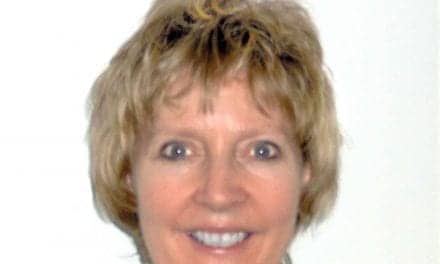Physical therapy continuing education that blends Internet-based modules with “hands-on” learning provides highly effective results.
Physical therapy continuing education (CE) delivery methods and access to resources that, today, we take for granted have evolved through the years. There was a time when terms such as web-based, Internet access, hotspots, and even Flash Players were not a part of everyday vocabulary. That has changed; and so has the traditional model for delivering continuing education.
Traditional learning methods are being re-evaluated and CE providers are recognizing that methods are changing, therefore creative approaches to delivery are taking hold among educational offerings. As part of this shift, many continuing education providers have recognized that week-long classes are no longer appealing, and extended programs have been reduced to long weekends to accommodate consumer expectations. There is also an increased demand for “anytime” access to the tools professionals require to maintain licensure and quality professional development. Physical therapists are savvy consumers and they consider many factors when investing in their education. Time away from their patients and families, and the cost of that education, are at the top of the list, in addition to content, which is the ultimate takeaway from learning events.
A DYNAMIC BLEND
The combination of Internet and face-to-face training is not an entirely new concept, but in today’s education environment can be best described as a type of blended learning. There are different forms of blended learning—or mixed mode education—and this method is but one of many. This mode lends itself to a more personalized experience for the participant. The asynchronous, self-paced Internet or online portion of the learning model enables the learner to have control over the time, place, and pace of the online learning module. Whether it is during the work day, over lunch, in the evening, or during the weekends, in most cases the choice is left to the end user when participating in this type of CE event. There are exceptions to this flexibility, most often experienced in an online offering associated with a degree program. For these types of programs, some online classroom instruction may occur, which will require participation at a specific time and date. Additionally, some Transitional Doctor of Physical Therapy (DPT) degree programs utilize this blended learning method to accommodate the busy professional yet also provide successful learning outcomes.
The face-to-face portion of the learning event also provides the PT with choices. The selection of seminar by date, location, and instructor is well within the learner’s control. Today, PTs are enjoying substantial benefits as more clinics are hosting or “sponsoring” seminar events at their own locations—outpatient as well as inpatient facilities. Employers are recognizing the importance of education and also are being creative in bringing continuing education opportunities to their entire PT team while decreasing the overall cost by doing so. This eliminates travel costs as well as extended time away from the clinic to attend an event at a distant location. Ultimately, the blended learning method can be a win-win for both employer and PT.
The importance of learning outcomes for both the participant and the provider cannot be forgotten in the development and participation in this combined type of event. Several studies have been conducted over the years that demonstrate positive outcomes not only in student/participant satisfaction, but also in the overall learning objectives of the experience. Although most studies focus on credit classes in degree programs, results of those studies speak highly of the success in students’ training and overall satisfaction in the areas of process, scores, and retention rates. A quick search on the Internet finds an abundance of resources available at one’s fingertips that analyze student outcomes, with a varied perspective from all over the world. Again, not a completely new concept, but one that is making its way to the CE PT audience.
Offerings that include technology coupled with hands-on learning can afford the PT consumer an optimal experience and truly has become a key learning model in physical therapy continuing education. PTs today are seeking out and depending on creative resources to complete licensing requirements and enhance professional development, as well as those seeking advanced degrees. This innovative approach has become instrumental in providing a comprehensive and integrated educational opportunity.
This format also lends itself to acting as a very flexible opportunity for the consumer. If a blended event does not offer exactly what the consumer is seeking, the customer can tailor an event to meet their needs. This can be achieved by locating an online event that outlines objectives that are in concert with the learner, and then combine it with a hands-on event that successfully meets the goals of the participant.
From both the PT and CE provider viewpoint, it is important that the event ultimately results in a meaningful learning experience. Questions that are applicable to both consumer and provider regarding these types of events are:
• Have the objectives been met?
• Is there a correct amount of online and live learning for the participant?
• Are the methods complementing each other?
Badrul Khan developed a guide to assist in planning, developing, delivering, managing, and evaluating blended learning outcomes, known as Khan’s Octagonal Framework. This process takes into consideration technological, pedagogical, interface design, evaluation, management, resource support, as well as ethical and institutional issues.
EQUIPPED FOR LEARNING
What does the online/live learning method mean for the physical therapist? The answer to this question varies based on several factors, including necessary computer equipment and Internet access, as well as available resources such as time and money. Before you begin any learning program that includes online or Internet-based modules, you want to be sure you have the proper equipment. Of course, requirements can vary depending on the provider. It can be as simple as having a Flash Player installed on a personal computer, or as complex as the amount of storage required for a computer to properly view and/or participate in an online offering. The CE provider should always disclose the computer specifications and make this information available to the attendee prior to the commencement of the learning event. This data can often be found on the provider’s website, or by calling and requesting this information based on the activity in which a learner wishes to participate. It can be somewhat intimidating for those who are not familiar with technology.
Following is an example of the required technical specifications for an online web-based program:
Processor: Any Dual Core Processor (Pentium D or later)
RAM: 2 GB or more for Windows XP, OS X 10.2 or earlier, 3 GB or more for Windows Vista, 7/8, Mac OS X 10.4, or later
Video Card: Any DirectX compatible graphics chipset
Sound Card: Any sound card that functions with the above requirements
Wi-Fi Card: Any compliant 802.11 g/n wireless card
Hard Disk Drive: Any storage device with sufficient free space for course materials
Another type of online offering is the webinar, which can be delivered in either a live or pre-recorded format (synchronous or asynchronous). These are often shorter in duration, and commonly range from 1 to 3 hours. The software requirements for webinars also can vary, and may require the use of downloadable software such as “Go To Webinar” or “Go To Meeting” for the attendee to participate. Upon registration for these types of events, information needed to log on to the webinar and details about computer requirements are disclosed. Generally, the resources needed to download, view, and participate in these events are easy to access and manage. Participation includes raising of hands and asking questions depending on how the CE provider has set up the event. This allows the participant to be active in the learning process. At the conclusion of this type of CE offering, the learner is asked to complete a test to confirm that the learning outcomes have been met.
In short, PTs should be certain they are equipped to fulfill the technical computer requirements before beginning the program. This will assist in making this portion of the blended learning experience more productive and enjoyable and will assist the PT in progressing to the next stage: hands-on training.
The synchronous or live portion of the event is hands-on, and led by an instructor inside a classroom. It will include labs, which is an appropriate environment for this learning process. It could be conducted at a clinic, hospital, school, or alternate location that is equipped with the tools needed for a successful experience.
FINDING THE RIGHT BALANCE
As with any learning event, it is of utmost importance to the consumer that learning outcomes and objectives be considered prior to beginning any type of continuing education offering. Be sure the class will help achieve the desired outcome. Participating in a blended learning event can offer both the asynchronous and synchronous experience. With the proper balance of these learning methods, the outcomes can be extremely beneficial to the learner.
The blend of the traditional with the innovation of technology is moving PT continuing education opportunities forward. It extends the reach of the learning event and optimizes the consumer’s investment of time and money in the program. With successful outcomes and quality education, this learning method of combining synchronous and asynchronous approaches will achieve high rates of participant satisfaction. RM
Lori Hankins is the director of Continuing Professional Education at the University of St. Augustine for Health Sciences.





